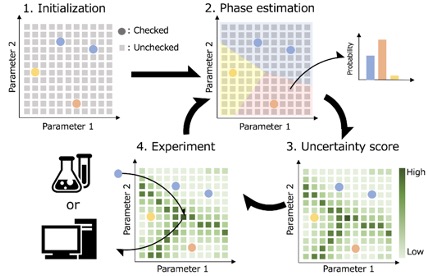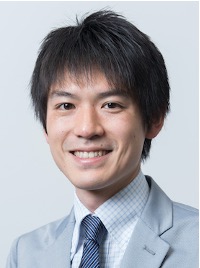Phase Diagram Construction by Active
Learning
Ryo
Tamura1* and Kei Terayama2*
1 International Center for
Materials Nanoarchitectonics (WPI-MANA), National Institute for Materials
Science, Tsukuba 305-0044, Japan
2 Graduate School of Medical
Life Science, Yokohama City University, Yokohama 230-0045, Japan
ABSTRACT: In
data-driven materials discovery, Bayesian optimization has been attracted
attention, which is a black-box optimization method using Gaussian process. In
Bayesian optimization, based on the machine learning prediction, materials
candidates which would have desired properties to be synthesized/measured in
the next step are efficiently selected. On the other hand, in general, before
conducting property optimization, there is a need to draw a phase diagram of
target materials. Since this problem cannot be directly performed by Bayesian
optimization, it is necessary to develop a data-driven method suitable for
phase diagram construction. We have developed a method realizing an efficient
phase diagram construction by active learning called PDC (Phase Diagram
Construction). In this method, the most uncertain point in the phase diagram is
selected as a candidate to be synthesized/measured at the next step by using
uncertainty sampling. Then, an experiment is performed according to the
selected candidate and the phase at the point is identified. Uncertainty
sampling is performed again on the increased experimental data to select next
candidates. By repeating this, it is possible to quickly draw a phase diagram
(Fig. 1). By using PDC, experimental determination of an uninvestigated phase
diagram for the deposition of Zn–Sn–P films by molecular beam epitaxy is
attempted.

Keywords:phase diagram; active learning; uncertainty sampling

Ryo Tamura has completed his PhD from The University of Tokyo at 2012. He is the Senior Researcher at International Center for Materials Nanoarchitectonics, National Institute for Materials Science (NIMS) and the Lecturer at the Graduate School of Frontier Sciences, The University of Tokyo. He has been serving as a materials informatics subject editor of Science and Technology of Advanced Materials (STAM).